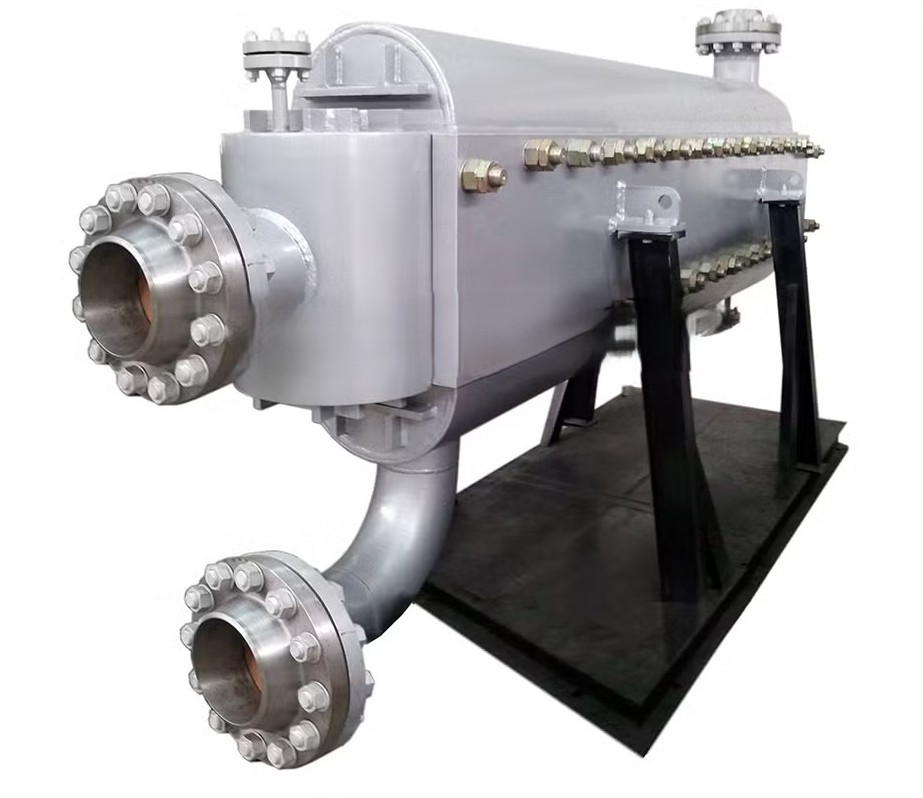Introduction
Alkali Resistant Heat Exchangers is specifically designed to withstand these harsh conditions while maintaining efficient heat transfer and long-term durability. These heat exchangers play a crucial role in chemical processing, food and beverage production, pulp and paper manufacturing, textile dyeing, and wastewater treatment, where alkaline solutions are commonly used in production processes, cleaning, and heat recovery systems. Unlike conventional heat exchangers that may degrade due to prolonged exposure to high-pH environments, alkali-resistant heat exchangers are constructed using materials that offer superior corrosion resistance, durability, and ease of maintenance. In industries where strong alkaline substances such as sodium hydroxide (NaOH), potassium hydroxide (KOH), or ammonium hydroxide (NH₄OH) are used, standard heat exchangers often suffer from corrosion, scaling, and reduced efficiency over time.
Key Features
Corrosion Resistance
Alkali-resistant heat exchangers are built using materials that can withstand high pH environments without suffering from corrosion or material degradation. Unlike conventional heat exchangers, which may corrode or weaken over time when exposed to alkaline fluids, these specialized units ensure long-term performance. Common corrosion-resistant materials include:
- Titanium – Excellent resistance to both alkali and acidic environments.
- Stainless Steel (SS 316L, SS 904L) – Contains molybdenum, enhancing resistance to corrosion in alkaline solutions.
- Hastelloy – A nickel-based alloy known for superior corrosion resistance in extreme conditions.
- PTFE (Polytetrafluoroethylene) & PVDF (Polyvinylidene fluoride) – Non-metallic materials that are completely resistant to alkaline attack and ideal for chemical industries.
Durability
Due to their high resistance to chemical wear and mechanical stress, these heat exchangers offer long operational life even in demanding industrial applications.
- They resist surface damage caused by aggressive cleaning solutions used in food, beverage, and pharmaceutical industries.
- Strong structural integrity ensures performance at high temperatures and pressures, which are common in industrial heat transfer applications.
High Efficiency
Alkali-resistant heat exchangers are designed to maintain optimal heat transfer rates while minimizing energy loss. Their efficiency is influenced by:
- Material selection – Metals like titanium and stainless steel have excellent thermal conductivity while resisting corrosion.
- Compact designs – Shell-and-tube or plate-type heat exchangers optimize surface area, improving heat exchange efficiency.
- Smooth internal surfaces – Minimize fluid resistance and enhance thermal transfer while preventing alkali deposits from forming.
Low Maintenance
Maintenance costs are reduced due to the self-cleaning nature of some materials and their ability to resist scaling and fouling.
- Materials like PTFE and PVDF prevent deposits from sticking to the surface, reducing the need for frequent cleaning.
- Titanium and Hastelloy are resistant to oxidation and buildup, which extends maintenance intervals.
- These heat exchangers can be easily cleaned in place (CIP) without requiring disassembly, making them ideal for continuous industrial processes.
Applications of Alkali-Resistant Heat Exchangers
Chemical Processing Industries
Chemical plants and reactors frequently handle strong alkaline solutions, which can corrode conventional heat exchangers over time. Alkali-resistant heat exchangers ensure reliable performance, long service life, and effective heat transfer in such environments.
- Soap and Detergent Manufacturing:
- The production of soaps, detergents, and surfactants involves sodium hydroxide (NaOH) as a key ingredient.
- Heat exchangers help maintain the desired temperature during saponification and other chemical reactions.
- They also assist in cooling the final product before packaging.
Pulp and Paper Manufacturing
The pulp and paper industry heavily relies on alkaline chemicals in various stages of production, making alkali-resistant heat exchangers essential for safe and efficient heat management.
- Bleaching and Pulping:
- The kraft pulping process uses caustic soda (NaOH) and sodium sulfide (Na₂S) to break down wood fibers.
- Heat exchangers help maintain the optimal process temperature, ensuring efficiency in lignin removal.
- Alkali-resistant materials prevent corrosion and scaling caused by high-pH chemicals.
- Chemical Recovery Systems:
- Many pulp mills operate chemical recovery systems to reuse alkaline chemicals (e.g., white liquor and green liquor recovery).
Food and Beverage Processing
The food and beverage industry requires strict hygiene and sanitation, often using alkaline cleaning solutions such as sodium hydroxide (NaOH) and potassium hydroxide (KOH) for equipment cleaning. Alkali-resistant heat exchangers play a crucial role in ensuring safe heat transfer and energy efficiency.
- Dairy Processing – CIP (Clean-in-Place) Systems:
- Dairy plants use CIP systems to clean milk storage tanks, pasteurizers, and processing lines with alkaline detergents.
- Heat exchangers recover heat from the hot cleaning solutions, improving energy efficiency.
- Beverage Production:
- Soft drink, juice, and brewery industries require alkaline sanitizing fluids to clean pipelines and fermentation tanks.
Textile and Dye Industries
The textile industry utilizes alkaline solutions in various finishing processes to enhance fabric quality and dye absorption. Heat exchangers play a vital role in controlling temperatures and improving process efficiency.
- Alkaline Dyeing Processes:
- Many textile dyes require high-pH conditions for color fixation.
- Alkali-resistant heat exchangers maintain consistent dye bath temperatures, ensuring uniform color absorption and reducing waste.
- Caustic Soda Mercerization:
- Mercerization is a process where fabrics are treated with caustic soda (NaOH) to improve strength, luster, and dye retention.
- Heat exchangers control the temperature of the caustic solution, preventing overheating or chemical degradation.
Conclusion
Alkali-resistant heat exchangers play a vital role in industries dealing with high-pH solutions, ensuring durability, efficiency, and reduced maintenance costs. Their ability to withstand corrosive alkaline environments makes them essential in chemical processing, pulp and paper, food and beverage, textiles, and wastewater treatment industries. By using corrosion-resistant materials like titanium, stainless steel 316L, Hastelloy, PTFE, and PVDF, these heat exchangers provide long-term reliability and enhanced heat transfer performance. Industries can increase energy efficiency, reduce downtime, and enhance sustainability by incorporating alkali-resistant heat exchangers into their processes. By selecting the appropriate material composition (such as titanium, stainless steel 316L, Hastelloy, or PTFE/PVDF), industries can prevent corrosion, reduce downtime, and enhance heat transfer performance.

